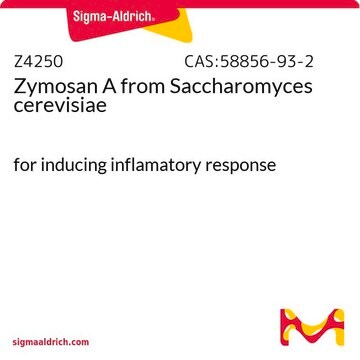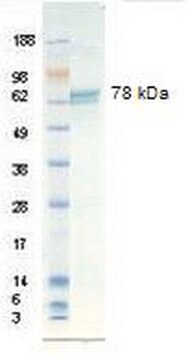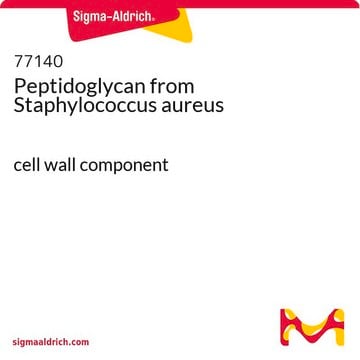V0132
Rat Vitronectin
from rat plasma, powder, suitable for cell culture
Sinónimos:
Serum spreading factor
About This Item
Productos recomendados
product name
Vitronectin from rat plasma, lyophilized powder, BioReagent, suitable for cell culture
biological source
rat plasma
Quality Level
product line
BioReagent
form
lyophilized powder
mol wt
75 kDa
packaging
pkg of 50 μg
technique(s)
cell culture | mammalian: suitable
surface coverage
0.1 μg/cm2
solubility
water: soluble 1.00 mL, clear, colorless
UniProt accession no.
shipped in
dry ice
storage temp.
2-8°C
Gene Information
rat ... Vtn(29169)
General description
Application
Biochem/physiol Actions
Components
Caution
Preparation Note
Storage Class
11 - Combustible Solids
wgk_germany
WGK 3
flash_point_f
Not applicable
flash_point_c
Not applicable
ppe
Eyeshields, Gloves, type N95 (US)
Certificados de análisis (COA)
Busque Certificados de análisis (COA) introduciendo el número de lote del producto. Los números de lote se encuentran en la etiqueta del producto después de las palabras «Lot» o «Batch»
¿Ya tiene este producto?
Encuentre la documentación para los productos que ha comprado recientemente en la Biblioteca de documentos.
Artículos
3D cell culture overview. Learn about 2D vs 3D cell culture, advantages of 3D cell culture, and techniques available to develop 3D cell models
Cancer stem cell media, spheroid plates and cancer stem cell markers to culture and characterize CSC populations.
Nuestro equipo de científicos tiene experiencia en todas las áreas de investigación: Ciencias de la vida, Ciencia de los materiales, Síntesis química, Cromatografía, Analítica y muchas otras.
Póngase en contacto con el Servicio técnico







